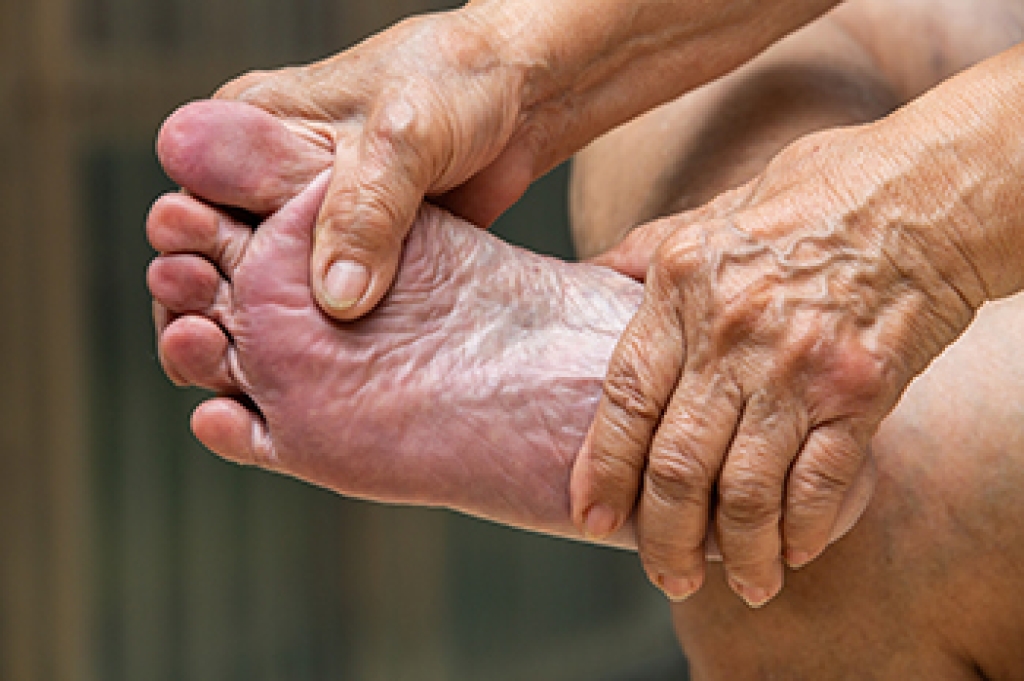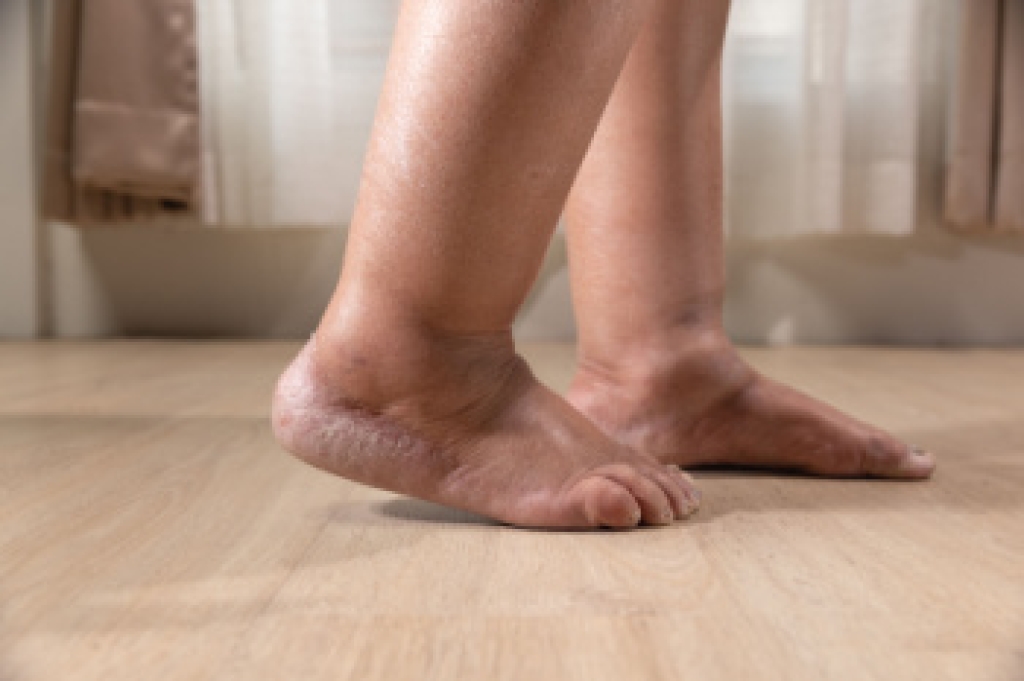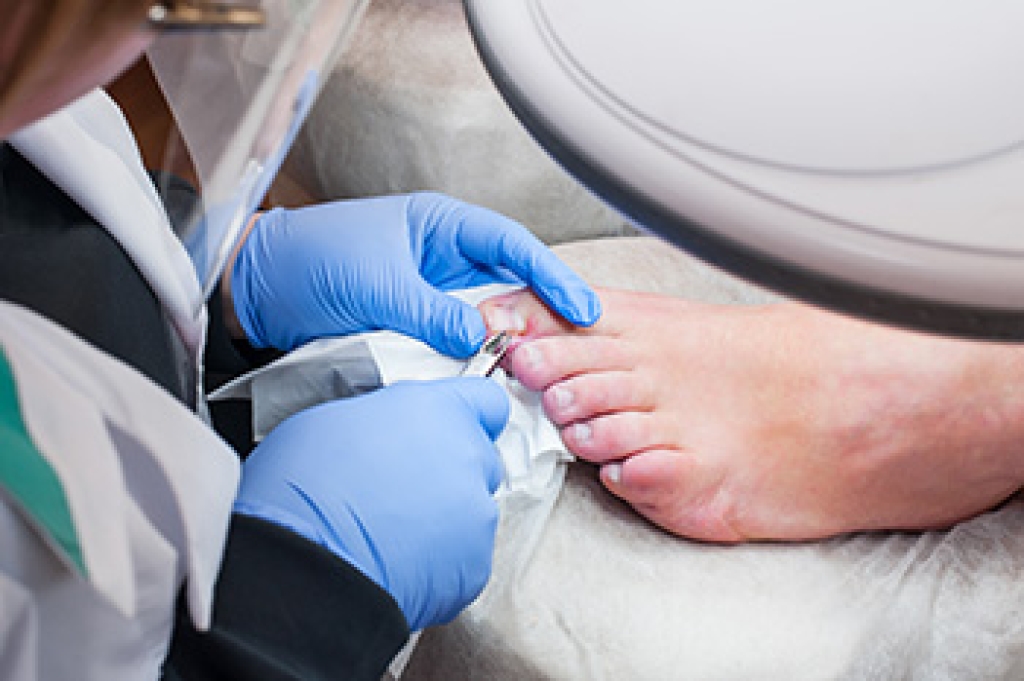Connect With Us
Blog
Blog
Understanding Lisfranc Injuries

Lisfranc injuries result if bones in the midfoot are broken or ligaments that support the midfoot are torn. The midfoot is key to foot stability and arch support. Injuries can result from trauma, such as a fall, car accident, or sports injury, even something as simple as twisting the foot awkwardly. Although rare, Lisfranc injuries are often mistaken for a simple sprain. Symptoms include swelling, bruising on the top and bottom of the foot, pain while standing or walking, and difficulty bearing weight. The foot may appear misaligned or feel unstable. Left untreated, a Lisfranc injury can lead to chronic pain, arthritis, and long-term disability. A podiatrist can diagnose a Lisfranc injury through a physical exam and imaging tests like X-rays, MRI or CT scans. Treatment depends on severity and may include rest, immobilization with a cast or boot, targeted exercises, or surgical repair to realign and stabilize the bones. If you think you may have this condition, it is suggested that you schedule an appointment with a podiatrist for appropriate treatment.
A broken foot requires immediate medical attention and treatment. If you need your feet checked, contact one of our podiatrists from Lewis Wolstein, DPM, P.C. & Associates. Our doctors can provide the care you need to keep you pain-free and on your feet.
Broken Foot Causes, Symptoms, and Treatment
A broken foot is caused by one of the bones in the foot typically breaking when bended, crushed, or stretched beyond its natural capabilities. Usually the location of the fracture indicates how the break occurred, whether it was through an object, fall, or any other type of injury.
Common Symptoms of Broken Feet:
- Bruising
- Pain
- Redness
- Swelling
- Blue in color
- Numbness
- Cold
- Misshapen
- Cuts
- Deformities
Those that suspect they have a broken foot shoot seek urgent medical attention where a medical professional could diagnose the severity.
Treatment for broken bones varies depending on the cause, severity and location. Some will require the use of splints, casts or crutches while others could even involve surgery to repair the broken bones. Personal care includes the use of ice and keeping the foot stabilized and elevated.
If you have any questions, please feel free to contact our office located in Co-Op City, NY . We offer the newest diagnostic and treatment technologies for all your foot care needs.
Common Foot Problems That Affect Older Adults

As people age, they often experience a variety of foot problems that can affect mobility and comfort. Bunions are a common issue, where the joint at the base of the big toe becomes enlarged and misaligned, causing pain and difficulty with footwear. Hammertoes develop when one or more toes become bent at the middle joint, often leading to discomfort and pressure in shoes. Corns, which are thickened areas of skin caused by repeated friction, can also become painful and make walking difficult. Older adults may be more susceptible to athlete’s foot, a fungal infection that causes itching and burning between the toes. Toenail fungus is another frequent concern, leading to thickened, discolored nails that are difficult to manage. If you are elderly and have developed foot pain, it is suggested that you schedule routine visits to a podiatrist who can treat various foot conditions and help you to monitor your foot health.
Proper foot care is something many older adults forget to consider. If you have any concerns about your feet and ankles, contact one of our podiatrists from Lewis Wolstein, DPM, P.C. & Associates. Our doctors can provide the care you need to keep you pain-free and on your feet.
The Elderly and Their Feet
As we age we start to notice many changes in our body, but the elder population may not notice them right away. Medical conditions may prevent the elderly to take notice of their foot health right away. Poor vision is a lead contributor to not taking action for the elderly.
Common Conditions
- Neuropathy – can reduce feeling in the feet and can hide many life-threatening medical conditions.
- Reduced flexibility – prevents the ability of proper toenail trimming, and foot cleaning. If left untreated, it may lead to further medical issues.
- Foot sores – amongst the older population can be serious before they are discovered. Some of the problematic conditions they may face are:
- Gouging toenails affecting nearby toe
- Shoes that don’t fit properly
- Pressure sores
- Loss of circulation in legs & feet
- Edema & swelling of feet and ankles
Susceptible Infections
Diabetes and poor circulation can cause general loss of sensitivity over the years, turning a simple cut into a serious issue.
If you have any questions, please feel free to contact our office located in Co-Op City, NY . We offer the newest diagnostic and treatment technologies for all your foot care needs.
How Edema Affects the Feet and Ankles

Edema is a condition characterized by the buildup of excess fluid in the body’s tissues, leading to swelling. When it affects the feet and ankles, it often causes them to appear puffy, feel tight, and sometimes become uncomfortable or tender to the touch. This swelling may worsen after long periods of standing or sitting and can make it difficult to wear shoes comfortably. Common causes include poor circulation, heart or kidney conditions, pregnancy, or certain medications. Edema may also result from injuries or inflammation, and the feet and ankles are especially vulnerable due to their position on the body and the effects of gravity. If your feet and ankles have become swollen, it is suggested that you consult a podiatrist who can determine what the cause is, and offer effective relief and treatment solutions.
Swollen feet can be a sign of an underlying condition. If you have any concerns, contact one of our podiatrists of Lewis Wolstein, DPM, P.C. & Associates. Our doctors can provide the care you need to keep you pain-free and on your feet.
Swollen feet are a common ailment among pregnant women and people who stand or sit for extended periods. Aging may increase the possibility of swollen feet and patients who are obese often notice when their feet are swelling too. There may be medical reasons why swollen feet occur:
- Phlebitis - A condition that causes the veins to become inflamed and can also cause leg pain.
- Liver disease - This may lead to low blood levels of albumin which is a protein. This can cause fluid in the blood to pass into the tissues and several areas of the body can become swollen.
- Heart failure - When the heart doesn’t pump properly the blood that is normally pumped back to the heart can pool in the veins of the legs causing swollen feet.
- Kidney disease - One of the main functions of the kidneys is releasing excess fluid in the body. This type of condition can make it difficult for the kidneys to function properly, and as a result the feet may become swollen.
- Deep-vein thrombosis (DVT)- This is a serious condition where blood clots form in the veins of the legs. They can block the return of blood from the legs to the heart which may cause the feet to swell. It is important to be treated by a podiatrist if this condition is present.
Swollen feet can also be caused by bone and tendon conditions, including fractures, arthritis, and tendinitis. Additionally, there may be skin and toenail conditions and an infection may cause the feet to swell. Patients who take medicine to treat high blood pressure may be prone to getting swollen feet.
Many patients elevate their feet to help relieve the swelling and this is generally a temporary remedy. When a podiatrist is consulted the reason behind the swelling can be uncovered and subsequently treated.
If you have any questions please contact our office located in Co-Op City, NY . We offer the newest diagnostic and treatment technologies for all your foot and ankle needs.
Nail Fixator Versus Winograd Procedure for Ingrown Toenails

Ingrown toenails can be treated in several ways, but two common approaches are the minimally invasive nail fixator and the more traditional Winograd technique. A nail fixator is a non-surgical device placed on the surface of the toenail to gently correct its curvature over time. It allows the nail to grow properly without digging into the skin, with little to no discomfort or downtime. In contrast, the Winograd procedure involves surgically removing a portion of the toenail and the surrounding tissue. While effective, it requires healing time and carries a higher risk of postoperative pain or infection. Nail fixators are often preferred for milder cases for patients who wish to avoid surgery. If you are experiencing recurring ingrown toenails and want to understand your treatment options, it is suggested that you see a podiatrist for further discussion and appropriate treatment.
Foot surgery is sometimes necessary to treat a foot ailment. To learn more, contact one of our podiatrists of Lewis Wolstein, DPM, P.C. & Associates. Our doctors will assist you with all of your foot and ankle needs.
When Is Surgery Necessary?
Foot and ankle surgery is generally reserved for cases in which less invasive, conservative procedures have failed to alleviate the problem. Some of the cases in which surgery may be necessary include:
- Removing foot deformities like bunions and bone spurs
- Severe arthritis that has caused bone issues
- Cosmetic reconstruction
What Types of Surgery Are There?
The type of surgery you receive will depend on the nature of the problem you have. Some of the possible surgeries include:
- Bunionectomy for painful bunions
- Surgical fusion for realignment of bones
- Neuropathy decompression surgery to treat nerve damage
Benefits of Surgery
Although surgery is usually a last resort, it can provide more complete pain relief compared to non-surgical methods and may allow you to finally resume full activity.
Surgical techniques have also become increasingly sophisticated. Techniques like endoscopic surgery allow for smaller incisions and faster recovery times.
If you have any questions, please feel free to contact our office located in Co-Op City, NY . We offer the newest diagnostic and treatment technologies for all your foot care needs.
Blog Archives
- 2026
- 2025
- 2024
- 2023
- 2022
- 2021

